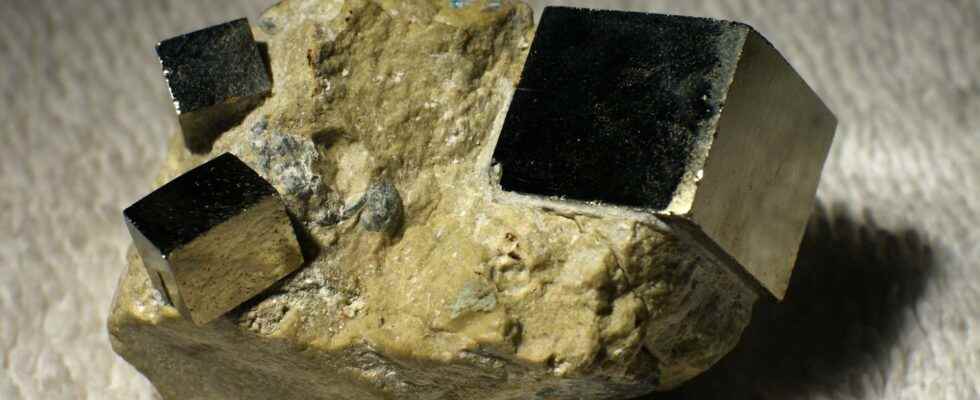Who has never marveled at the perfection of a quartz crystal or the cubic shape so clean of a pyrite crystal? The perfection of certain crystals may suggest that the crystalline construction is governed by a flawless organization of the atoms. A representation of absolute order. But this perfection is only apparent.
You will also be interested
[EN VIDÉO] Formation of a crystal at the atomic scale A salt crystal is filmed during its formation at a resolution never before reached: atomic! © 2021 American Chemical Society
It is usually considered that the crystallization process leading to the formation of minerals is governed by a very ordered mechanism that can be schematized as an addition of blocks of construction identical. The way in which these basic blocks, composed ofions or from molecules, will define the crystal lattice, the true signature of a mineral. This stacking is not done at random, it is a mechanism governed by the laws of chemistry and interactions between atoms and molecules. However, a growing number of laboratory experiments show that this classical model of crystallization is not so simple and that other crystallization pathways are possible in nature.
A crystallization far from perfect
A team of researchers led by Tomasz Stawski from Federal Institute for Materials Research and Testing from Berlin closely studied anhydrite crystals from the Naica mine in Mexico, famous for its crystals of gypsum giants, some of which can reach over 11 meters in length. The anhydrite crystals studied have the advantage of having developed quietly, under particularly stable conditions and close to equilibrium. For millennia, therefore, no constraint has come to disrupt their growth, which makes them particularly interesting examples for the study of crystallization mechanisms in a natural environment.
The crystal structure of these anhydrite crystals has been screened in the laboratory, using different microscopy techniques and analysis of the diffusion from X-rays. The results, published in the journal PNAS, show that these crystals are far from perfect and that their structure is characterized by the presence of faults alignment at the nanometric scale, i.e. that of atoms. These defects, however small they are, are far from trivial, since their presence within the crystalline structure will have repercussions on several scales of length. The crystal finally obtained, of centimeter size, will therefore not be perfect but composed of voids of different sizes. We are talking about mesostructured crystals, whose crystal structure, imperfect, is unique for each crystal.
A failed Tetris game
To understand this crystallization process, we can imagine a basic block made up of an assembly of atoms. Unlike the classic scheme in which the blocks stack perfectly, here the blocks will not fit together perfectly, generating points, lines, or even fault planes. If the quantity and extent of these defects at the atomic scale are sufficient to form different crystal domains (we speak of grains), the material is considered to be polycrystalline. When no more order is observed, it is said to be amorphous.
The crystals studied by the team of researchers clearly do not belong to any of these categories, but have characteristics common to these different groups. Some measurements indicate that the structure is that of a single crystal, others show a polycrystalline signature, and others the presence of an amorphous phase. Anhydrite crystals are therefore referred to as mesocrysts. This crystalline architecture comes from these small alignment defects which occur during the stacking of the basic blocks.
To schematize their concept, the authors give the example of nature playing the construction game Tetris, without succeeding in achieving the goal which is to achieve a perfect stacking from small basic bricks.
Interested in what you just read?
.
fs11
